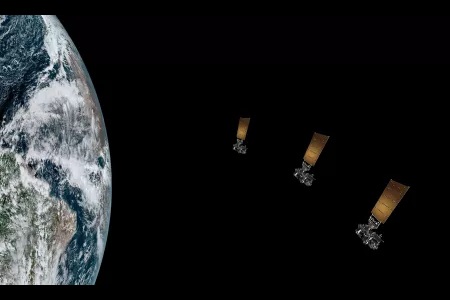ACX is the second instrument BAE Systems has been contracted to develop for the GeoXO mission to support environmental monitoring.

BAE Systems has been chosen by NASA to spearhead the development of the Atmospheric Composition instrument (ACX), slated to fly aboard the National Oceanic and Atmospheric Administration’s (NOAA) upcoming Geostationary Extended Observations (GeoXO) satellite constellation.
The GeoXO constellation, comprising three satellites, aims to build upon the Earth observation capabilities established by its predecessor, NOAA’s current Geostationary Operational Environmental Satellites-R series (GOES-R). While maintaining crucial functions like lightning mapping and weather monitoring through visible and infrared imagery, GeoXO will introduce capabilities including atmospheric composition, infrared sounding, and ocean colour observations, augmenting forecast accuracy and scientific insights.
The ACX instrument, developed by BAE Systems, is a hyperspectral imager designed to provide hourly air quality assessments across the ultraviolet (UV) to visible (VIS) light spectrum. Its high-spatial and temporal resolution enables real-time monitoring of air quality fluctuations, thereby enhancing air quality forecasts.
Dr Alberto Conti, Vice President and General Manager of Civil Space for BAE Systems Space & Mission Systems, emphasized the wide-ranging benefits of the ACX instrument. He said: “The ACX instrument will deliver robust, practical benefits for the science and operational user communities, as well as the public at large.” Notably, it will improve weather forecasts, assist pilots in avoiding hazardous conditions, alert hospitals to impending air quality issues, and safeguard community health and economic stability.
Beyond its operational role within NOAA, ACX will contribute significantly to various research domains, accurately measuring emissions and movement of key atmospheric constituents. Together with the GeoXO Imager (GXI) and infrared sounder (GXS) instruments, ACX will enrich weather product data available to NOAA, enhancing forecasting capabilities.
BAE Systems’ expertise in atmospheric monitoring is underscored by its previous projects, including South Korea’s Geostationary Environment Monitoring Spectrometer (GEMS) and NASA’s Tropospheric Emissions: Monitoring of Pollution (TEMPO) instruments. Once deployed, ACX will join a “geostationary ring” of satellites, extending air quality measurements across North America, Asia, Europe, and North Africa.
In addition to ACX, BAE Systems will construct the GeoXO Sounder (GXS) instrument, further bolstering NOAA’s weather prediction models and severe weather forecasting capabilities. Collaboration across these projects will optimise development processes.
Expected to commence operations in the early 2030s and continue through 2055, GeoXO represents a significant advancement in Earth observation technology, poised to revolutionize weather forecasting and environmental monitoring on a global scale.














































































